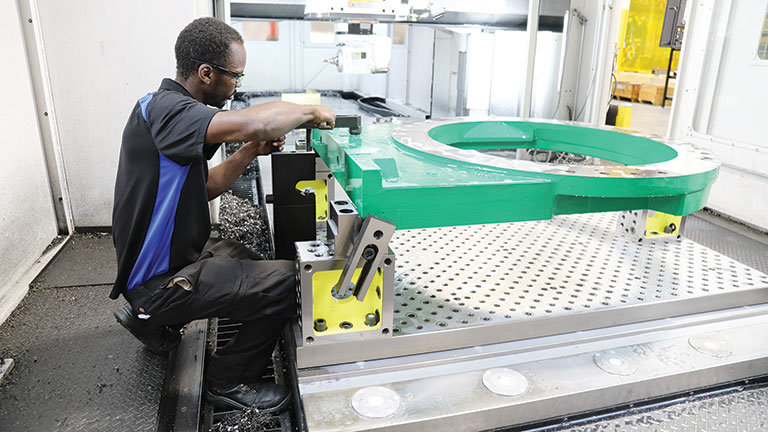Those who manufacture precision workholding systems have the same goals and challenges as the machinists who use them. Both groups strive to reduce setup times and optimize cutting cycles. Secure, consistent, and accurate gripping is paramount. An increasing number of them are moving to lightly attended and even lights-out manufacturing, so they need a way to make machining both safe and predictable. And above all, they want to avoid crashing their machine tools.
Matt Grube is one of these. A programmer for Bluco Corp., Naperville, Illinois, he and the shop’s machinists are responsible for all of the above and more at this 30-year-old manufacturer of high-quality welding tables and positioners, modular fixturing, and other time-saving workholding systems and accessories. One of the tools they use to accomplish these goals? VERICUT toolpath simulation and optimization software from Irvine, Calif.-based CGTech Inc.
“We make hundreds of standard components for our welding line of products as well as our machining line, and also some specialty tooling,” Grube said. “Everything’s modular, making it quite easy for shops to fixture most anything that comes their way, but there are scenarios where the part doesn’t lend itself to standard tooling and a custom fixture is needed. In these cases, we’ll design something that will attach to one of our systems but also hold the customer’s part securely. It was partly the custom work that helped drive the expansion to our new facility.”
Grube is talking about Bluco’s late 2017 move into a 120,000 ft2 (11,148 m2) corporate office, two-thirds of it devoted to manufacturing space. In it, you’ll find an assortment of CNC machine tools, chief among them a massive double-column mill, a dual-spindle lathe, and the flagship of the production floor, a pallet-changing horizontal machining center.
As is so often the case, investment in a key piece of equipment spurred additional investment. Early in 2018, Bluco purchased Productivity+, a software extension for Mastercam users that simplifies and expands their ability to use Renishaw measuring probes on CNC machinery. With it, Grube can more easily verify part locations, measure features, update work offsets, and more, and do so without human intervention. Not only does this streamline the setup procedure, it also opens the door to lights-out manufacturing.
“There are several excellent reasons for machine probing,” he said. “It saves time during setups because you can use it to automatically input workpiece offsets and orientation. But you can also check how much material is left after roughing and adjust the finishing program accordingly, or verify critical dimensions, or call up different tools or programs based on different criteria. And if something goes wrong, you can have it send an alert if operator intervention is needed. It’s still fairly new to us, but the goal is to load up a pallet full of material and come back to finished parts the next morning.”
Read more: Toolpath Simulation, Optimization Boosts Part Manufacturing for Fixtures





